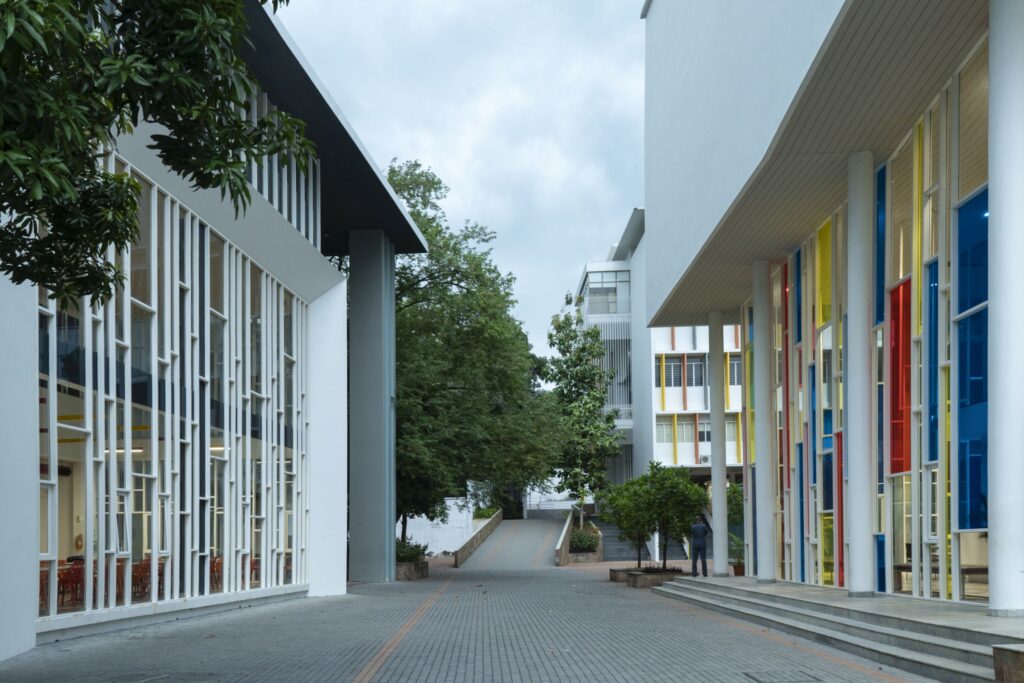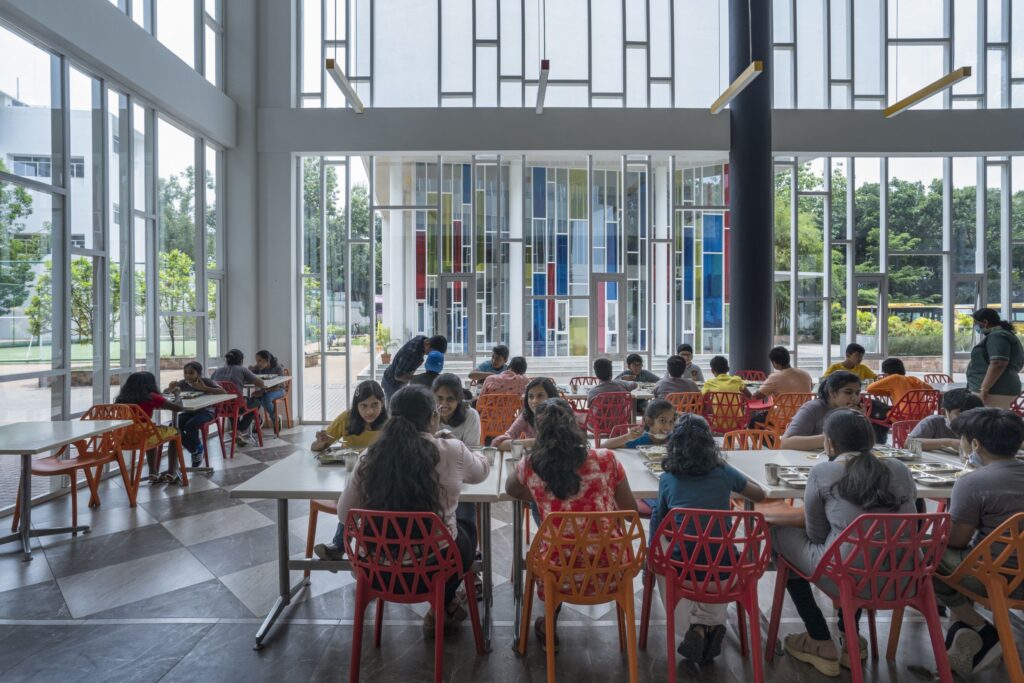Studio Evolving Radical Aesthetics’s Principal Architect, Ar Muhammed Ashiqe, discusses the design of Delhi Public School, Kollam, with Aakrati Akar.

AA: What were the major highlights, or challenges in the design brief?
ERA: Along with the brief for designing a significantly large campus on a relatively small land of three and a half acres (later expanded to six acres), the client had an image of a campus which speaks about the aspirations of modern world to the young generation. Another objective we established for ourselves in the design was to keep all of the existing prominent trees, which we managed to accomplish.
AA: How did you make the local context, micro and macro climate an important consideration for designing the school?
ERA: Rather than perceiving the open spaces just as a conjunction of building masses, we thought of conceptualizing the open space in prior to the buildings which would eventually surround the open space. Rethinking this single concept had a significant impact on the creation of buildings that respond to their context and microclimate.
Aside from that, the fragmentation of the masses was taken into account in accordance with the existing wind pool that was analyzed from the site. This ensured that almost all classrooms on campus had adequate ventilation.



AA: How does the design meet the needs of a diverse set of users; kindergarteners, school students, and teachers and support staff?
ERA: The central idea we proposed was to value the time everyone spends on campus, thus celebrating every single stakeholder in the design. As a campus, the design aimed to connect a diverse range of users without upsetting the balance. We were pleased to see that the cross connections we provided among the spaces, as well as the decisions we made to weave some spaces together, succeeded.
AA: Over time, curriculum and pedagogy evolve; how is this taken into account in school design and planning?
ERA: We developed spaces for the buildings with the concept of flexibility in mind, considering the changes that could be accommodated when it comes to the building’s functioning as part of a school. This foresight aided in the creation of spatial fluidity in the overall design.


AA: Is there anything you would like to relook at after seeing the functioning of the school?
ERA: No. Not a single brick.
AA: What role does landscape design play in enhancing the academic experience?
ERA: In this particular campus, the entire masterplan was designed to generate interesting open spaces which performs an immense dialogue with the buildings. The concept evolved to reimagine the indoor study experience by establishing a stronger connection to the outdoors and absorbing more of its intangible qualities. Creating an experiential environment by blurring the lines between the concepts of outdoor and indoor.









One Response
Organic architecture integrating nature with study is the real issue designing SOA , here it is nowhere.